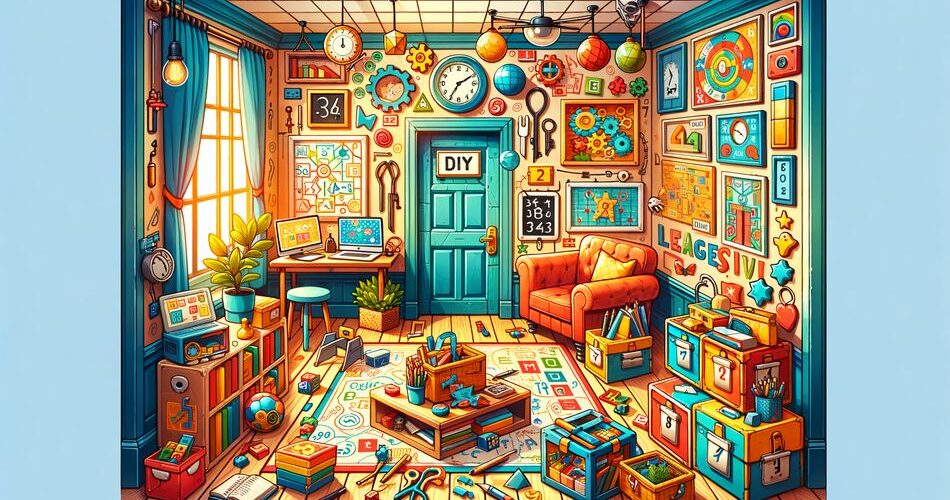Welcome to Growing Together, where we strive to deliver expert parenting tips and child development advice that can make your family life smoother and more enjoyable. Today, let’s delve into an innovative way to make learning fun for the whole family: DIY educational escape rooms. This exciting and engaging activity turns learning into an adventure, providing fantastic benefits for both kids and adults alike. So, gather your family and start your journey into the world of educational escape rooms!
What is an Educational Escape Room?
An escape room is a physical adventure game where players solve puzzles and complete tasks to achieve a specific goal within a set time limit. Educational escape rooms take this concept a step further by incorporating learning elements, making it an excellent way to teach your children new skills and knowledge in a fun and interactive setting.
Benefits of Educational Escape Rooms
Educational escape rooms provide a myriad of benefits, including:
- Collaborative Learning: Working together as a team fosters communication, cooperation, and social skills.
- Critical Thinking: Solving puzzles and challenges enhances problem-solving and critical-thinking abilities.
- Interactive Learning: Hands-on activities make the learning experience more engaging and memorable.
- Motivation: The gamified environment encourages children to stay focused and motivated.
- Fun for All Ages: Escape rooms can be designed to cater to various age groups, making them suitable for the entire family.
How to Create Your Own DIY Educational Escape Room
Creating a DIY educational escape room may seem daunting, but with a bit of planning, it can be a rewarding and enjoyable experience for everyone. Here’s a step-by-step guide to help you get started:
1. Choose a Theme
Select a theme that aligns with your child’s interests and educational needs. Themes could range from historical events, science experiments, literature, geography, or even math problems.
2. Define the Learning Objectives
Determine the specific skills or knowledge you want your children to acquire or practice. This could include vocabulary, math skills, scientific concepts, or historical facts.
3. Design the Storyline
Create a compelling storyline that will guide the players through the escape room. The story should include an introduction, a series of challenges or puzzles, and a final goal. Think of a plot that ties in with your theme and makes learning the key to overcoming challenges.
4. Set Up Puzzles and Challenges
Develop a series of puzzles and challenges that align with the learning objectives. These could include riddles, crosswords, math problems, or science experiments. Ensure that each task is age-appropriate and offers a mix of difficulty levels to keep everyone engaged.
5. Gather Supplies
Collect all the necessary materials and supplies needed for the escape room. This could include locks, keys, clues, printables, and any thematic decorations to set the scene.
6. Organize the Room
Arrange your space according to the storyline, setting up stations or areas where each puzzle or challenge will take place. Make sure everything flows logically and that players can move easily from one task to the next.
7. Test the Escape Room
Before unveiling your escape room to the family, conduct a test run to ensure all puzzles and challenges are solvable and the storyline flows smoothly. Make any necessary adjustments based on your trial run.
Tips for a Successful Escape Room Experience
- Keep it Fun: Maintain a positive and encouraging atmosphere to ensure everyone enjoys the experience.
- Time Management: Set a reasonable time limit for completing the escape room. Adjust the difficulty of the puzzles to match the time frame.
- Provide Clues: Be prepared to offer hints or clues if participants get stuck to prevent frustration.
- Celebrate Success: Acknowledge and celebrate the completion of the escape room with a small reward or celebration to keep the excitement going.
Conclusion
DIY educational escape rooms are a fantastic way to turn learning into an adventure for the whole family. They provide an interactive, engaging, and collaborative environment that enhances learning and fosters essential skills. By carefully planning and designing your own educational escape room, you can create a memorable and fun experience that brings the whole family together in the pursuit of knowledge. So why wait? Start your escape room adventure today and watch your family learn and grow together!
For more expert parenting tips and child development advice, be sure to explore the vast resources available here at Growing Together. From newborns to teens, we have valuable resources, articles, and video courses to support your parenting journey.

